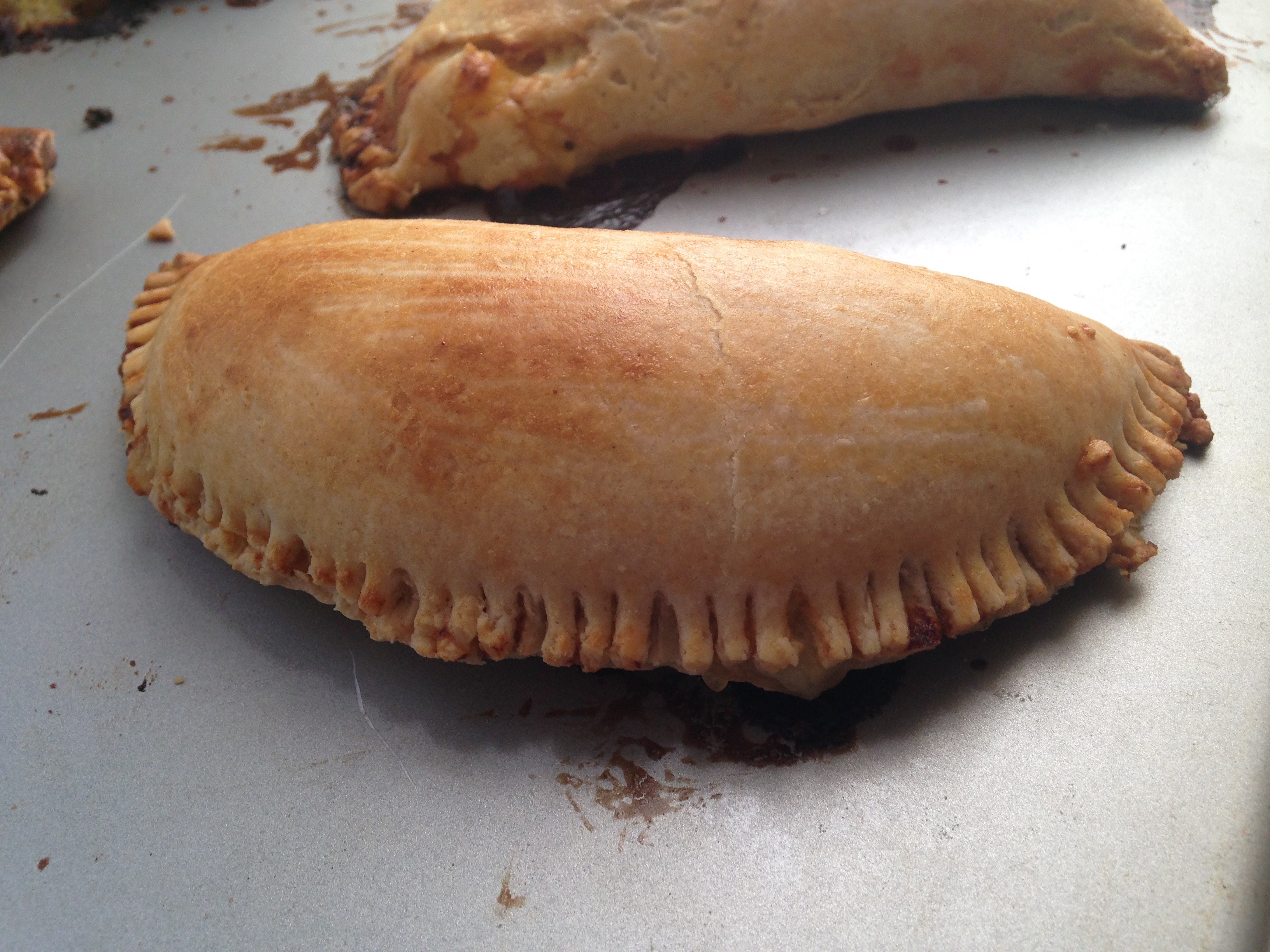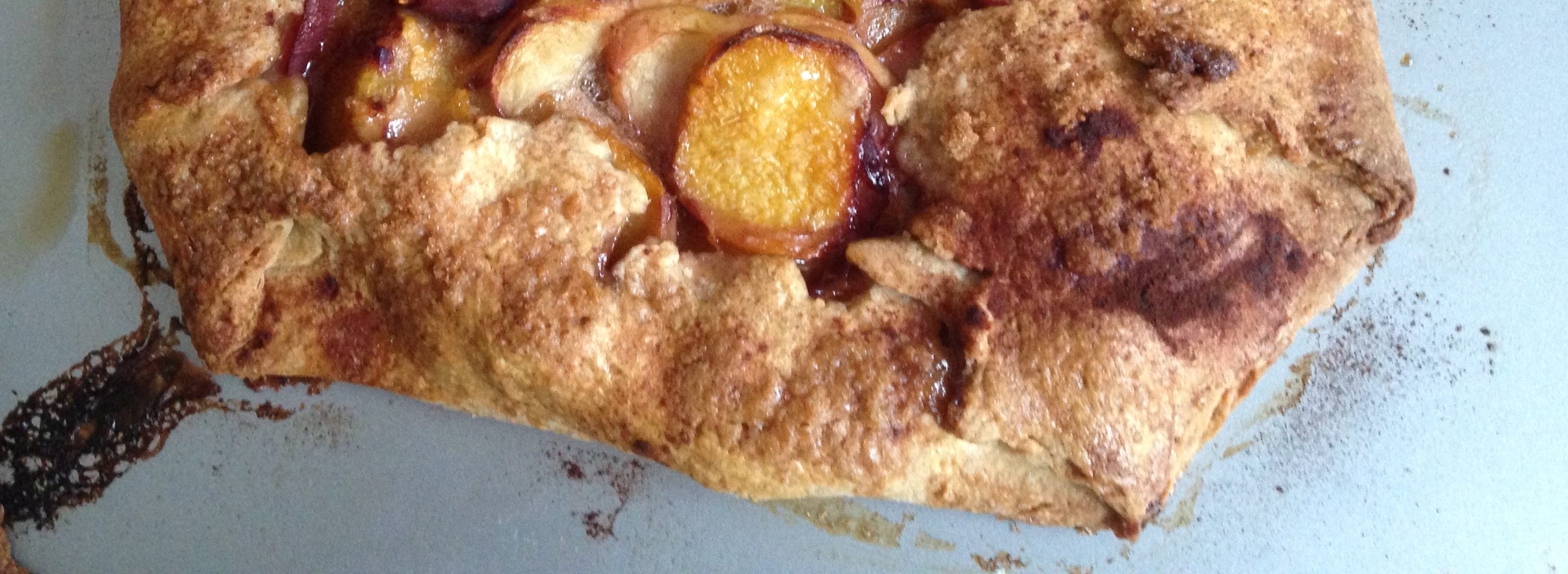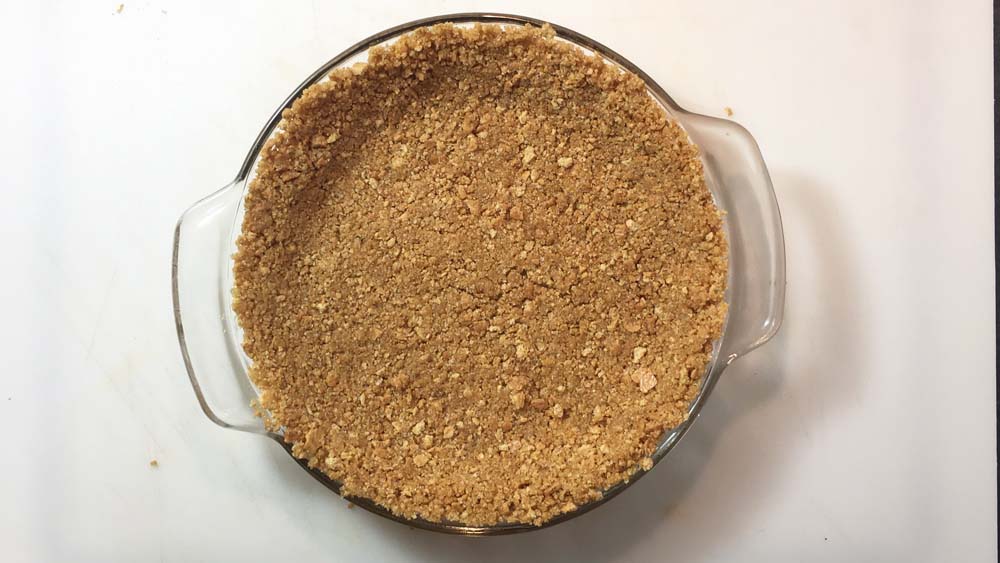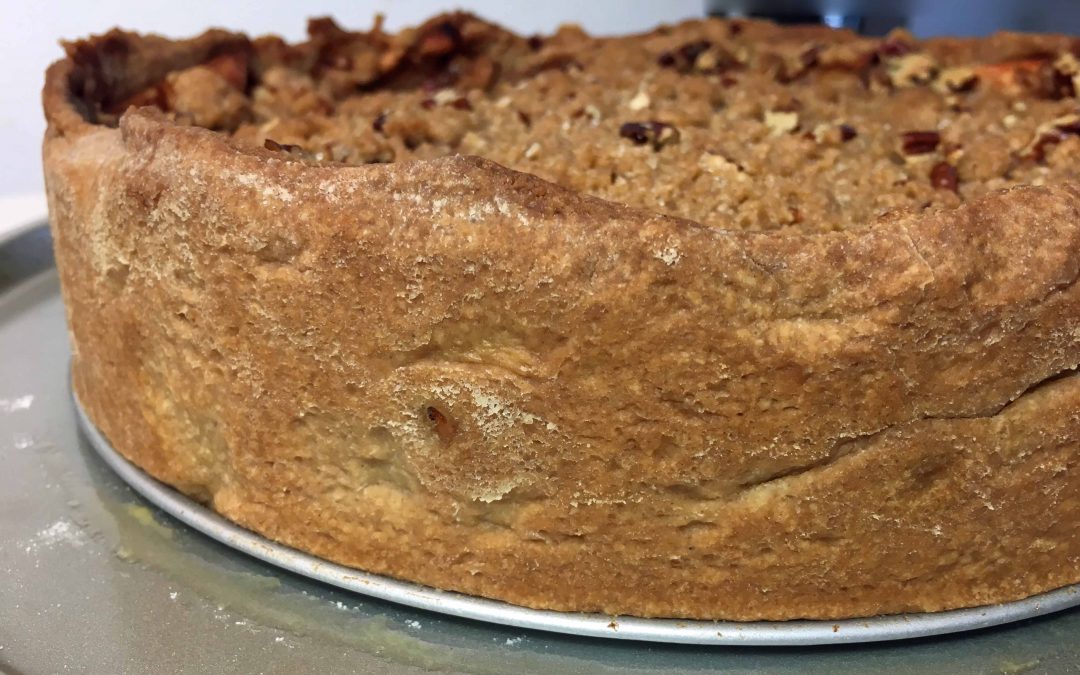How To Make Pie Crust 4 Ways
Because pie is magical you should know how to make pie crust in as many ways possible. Plus, I think pie season is year round, so the more ways we know how to make pie crust, the more ways we can make pies from all seasons. Whether it is a custard pie or a vegetable tart or a fruit pie or a galette, one of these pie crusts is sure to suit.

How To Make Pie Crust 1 – The Classic – Flour, Butter, Water
The goal of pie crust making is a light, tender, flaky crust. At the foundation of this is cutting fat into flour. This stops gluten formation which leads to tenderness and flakiness. In the old days, and it is still happening today, the fat used was lard – a fine pie crust this made. I am partial to rich buttery flavor, so my go to fat is cold butter. After the flour and butter, the classic pie crust is bound together with water. The trick with the water, which is a know gluten former, is to use just enough to bring the dough together, but not enough to make the crust tough. The other tool that can be used is cold – delivered by cold butter and cold water. Cold also inhibits gluten formation. For a sweet pie crust, a dash of sugar can be added which will also help with tenderness. After cutting the butter into the flour, the water is added a little bit at a time until the mixture can be pressed together into a dough. The dough is worked minimally, then refrigerated before rolling out and using. It can also be frozen and used when needed.
- 2 cups of flour
- 1 cup of cold butter
- 2 tbsp of sugar (omit if making savory crust)
- 1/4 tsp of salt
- cold water
- Cube the cold butter.
- In a bowl mix the flour, sugar (if using) and salt.
- With a fork, pastry cutter, your fingers, or a food processor, cut the butter into the flour until the mixture looks like coarse sand. If using a food processor, pulse the flour, sugar, and salt together then add the butter and pulse until the mixture looks like sand. The idea is to rub the butter and flour together so that the flour is totally covered by the fat.
- Add water to the mixture 1 tbsp at a time mixing or pulsing until the dough, when pushed together between your fingers, sticks together and can form a ball. You probably will need 4-6 tbsp, but use as little water as possible.
- Pour the mixture onto a clean work surface and push/fold the mixture until it can be formed into a disk. Wrap the disk in plastic wrap and refrigerate for at least 30 minutes.
- After refrigeration, remove the dough from the plastic wrap and place it on a floured work surface.
- Roll out the dough as needed using a rolling pin.
- For a pie, roll the dough until it is about 1/8 inch thick. You may have to work/push the dough together a little as you roll it so that it comes together. If it is sticky during rolling, use a little extra flour.
- If the crust needs to be blind baked, roll the dough, place it in a pie pan. Place a piece of baking paper on top. Pour in 2 lbs of dried beans. Bake at 400F until the crust is just beginning to look flaky and just golden brown. Remove it from the oven and set aside until ready to fill.

How To Make Pie Crust 2 – Flour, Butter, Egg and Fraisage
A very nice pie crust can also be made with flour, butter, egg and a technique called fraisage. Here, the butter is cut into the flour as usual. Instead of water, although a dash may be mixed with the egg, beaten egg is stirred into the butter and flour then the mixture is pushed together into a dough. Instead of working the dough, as in gentle kneading, the technique of fraisage is then used. In this technique, the dough is pushed toghether into a rough dough then pieces the size of walnuts are smeared across the work surface with the palm of your hand. The smears are scraped up with a pastry scraper, stacked on top of each other then wrapped and refrigerated until it is rolled out. The smearing helps bring all the ingredients together, the stacking helps create layers that make the crust delicate and flaky. This makes a very nice crust, perfect for savory or sweet (with a dash of sugar added) pies. I particularly like this crust for galettes.
- 1½ cups of flour
- 2 tbsp of sugar (omit if making a savory pie)
- ¼ tsp of salt (increase to taste if making a savory pie)
- 1 stick of very cold, cubed butter
- 1 egg
- 1 tbsp ice water
- Place the flour in the bowl of a food processor. Add the sugar and salt. Pulse to mix.
- Add the butter. Pulse the butter and flour until the butter is fully incorporated in the texture of looks like sand. You can cut the flour and butter together using your fingers or a pastry cutter.
- Pour the butter and flour mixture out onto a clean work surface.
- Make a well in the center of the butter/flour mixture.
- In a small bowl, beat the egg and water together. Pour the egg mixture into the flour/butter well.
- With a fork, slowly begin mixing the egg and flour mixture together. When a paste is formed, using a pastry scraper, start folding the mixture together until a rough dough comes together.
- Take small pieces (about the size of a walnut) of the rough dough in you hand. Using the heel of your hand, smear the pieces across the worksurface.
- Scrape up the smeared dough with a pastry scraper and place it to the side. Repeat the smearing piling up the scraped up dough. Continue until all the dough is smeared and stacked. Form the dough into a disc.
- Wrap the dough in plastic wrap and refrigerate until needed or freeze for later use.
- After the dough is rolled out and placed in the pie pan, the dough can be blind baked if needed at 350F for 10-12 minutes.

How To Make Pie Crust 3 – No Roll Dough
A no roll dough is a nice time saver if you think cutting butter and flour and rolling a crust takes too much time. In this crust, melted butter and egg are mixed directly into the flour with no fuss. A delicious crust is still achieved although some tenderness is sacrificed. In some recipes, only oil is used which may result in a slightly more tender dough (egg and butter contain water that will lend to gluten formation), but oil has little flavor. I like to use egg and butter for flavor and richness. I am ok with trading off a little flakiness or tenderness and gain a lot of flavor. It is up to you. After the ingredients are mixed, the dough is pressed into the pie pan, filled and baked. No, after pressing it into the pan, it doesn’t need to be refrigerated.
- 2 cups of flour
- 1 tbsp of sugar (omit if making a savory pie)
- ¼ tsp of salt (increase to taste if making a savory pie)
- 1/2 tsp of baking powder
- 6 tbsp of melted butter
- 1 egg
- 1 teaspoon of vanilla (optional)
- Ice water
- In a large bowl, stir together the flour, sugar, salt and baking powder.
- In a small bowl, stir together the butter, egg and vanilla with a fork.
- Pour the egg mixture into the flour mixture while stirring. Stir the ingredients until a dough is formed and the flour mixture is fully moistened. Add ice water 1 tbsp at a time as needed to fully moisten the dry ingredients. The dough should come together and be smooth in appearance.
- With your fingers, spread the dough into a 9 inch pie pan.
- If it is necessary to blind bake the crust, bake the crust at 350F for 10-12 minutes.

How To Make Pie Crust 4 – A Crumb Crust
A crumb crust, like a graham cracker crust, is a great crust for delicious desserts. Of course, any cookie or cracker can be used, so there is a world of possibilities, both savory and sweet. Simply, the cookie or cracker is made into crumbs and crumbs are bound with melted butter. This mixture can be flavored with a variety of herbs or spices, cocoa powder and sweetened with sugar, as needed. The buttery crumb is then pressed into the pie pan. Sometimes, you pre-bake a crumb crust. Sometimes you don’t. It depends no the recipe. If you do, 8-10 minutes at 350F will do the job.
If you wanted to save a few calories, the crumb could be moistened with just egg white, then pressed into the pan. In this case, if the pie filling is not going to be baked, the crust should be baked on its own because of the raw egg. If the filling is baked, there is no need to bake it first.
- 12 graham cracker sheets (about 4oz)
- 1/4 cup of sugar
- 1/4 tsp of salt
- 1 teaspoon of vanilla
- 6 tablespoons of melted butter
- Place the graham crackers in to a plastic zip bag. Seal the bag. Using a rolling pin or meat mallet break up the crackers into crumbs. A food processor can also be used to make the crumbs.
- Transfer the graham cracker crumbs to a medium bowl
- Add the sugar salt vanilla and melted butter. Mix with a fork until the graham cracker crumbs are fully moistened.
- Pour the crumbs into a 9 inch pie pan. With your finger, press crumbs into a crust as evenly as possible.
- If necessary, the crust can be blind baked at 350° for 8 to 10 minutes.
- Other spices can be added to taste to create many deliciously different graham cracker crusts. Other cookies or savory crackers can be used with this method to make a crust. If using savory crackers, omit the sugar and vanilla, and season to taste.





